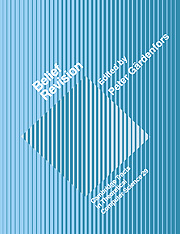Book contents
- Frontmatter
- Contents
- Belief revision: An introduction
- Reason maintenance and belief revision: Foundations versus coherence theories
- Syntax based approaches to belief revision
- A dyadic representation of belief
- On the logic of theory change: More maps between different kinds of contraction functions
- Belief change and possibility theory
- On the difference between updating a knowledge base and revising it
- Planning from first principles
- Autonomous belief revision and communication
- Conditionals and knowledge-base update
- Index
Belief change and possibility theory
Published online by Cambridge University Press: 21 September 2009
- Frontmatter
- Contents
- Belief revision: An introduction
- Reason maintenance and belief revision: Foundations versus coherence theories
- Syntax based approaches to belief revision
- A dyadic representation of belief
- On the logic of theory change: More maps between different kinds of contraction functions
- Belief change and possibility theory
- On the difference between updating a knowledge base and revising it
- Planning from first principles
- Autonomous belief revision and communication
- Conditionals and knowledge-base update
- Index
Summary
INTRODUCTION
In the last five years, there has been much concern in Artificial Intelligence about the problem of belief revision. A rather exciting feature of the on-going debate is that it has led to an interaction between fields which usually ignore each other, such as logic, probability theory, fuzzy set and possibility theory, and their epistemological underpinnings. In his book, Gärdenfors (1988) emphasizes in a convincing way that notions of epistemic state can be defined in the framework of logic as well as in the one of probability theory and that similar postulates can be put forward in the two settings, for the purpose of devising rational updating operations that take place upon the arrival of new pieces of information. On the other hand Spohn (1988), in trying to refine the logical notion of epistemic state, viewed as a consistent and deductively closed set of propositions, comes close to Shackle's (1961) notions of degrees of potential surprise, as well as Zadeh's (1978) possibility theory. However he proposes revision rules that are in some way in accordance with probability theory where probabilities only take infinitesimal values (Spohn, 1990). Besides, one of the main outcomes of Gärdenfors' logical theory of belief change is that any revision process underlies an ordering of propositions that form the epistemic state; the rationality postulates force this ordering to satisfy specific properties, and the only numerical set-functions that can account for these properties are the so-called necessity measures that play a basic role in possibility theory (Dubois and Prade, 1988).
- Type
- Chapter
- Information
- Belief Revision , pp. 142 - 182Publisher: Cambridge University PressPrint publication year: 1992
- 49
- Cited by



